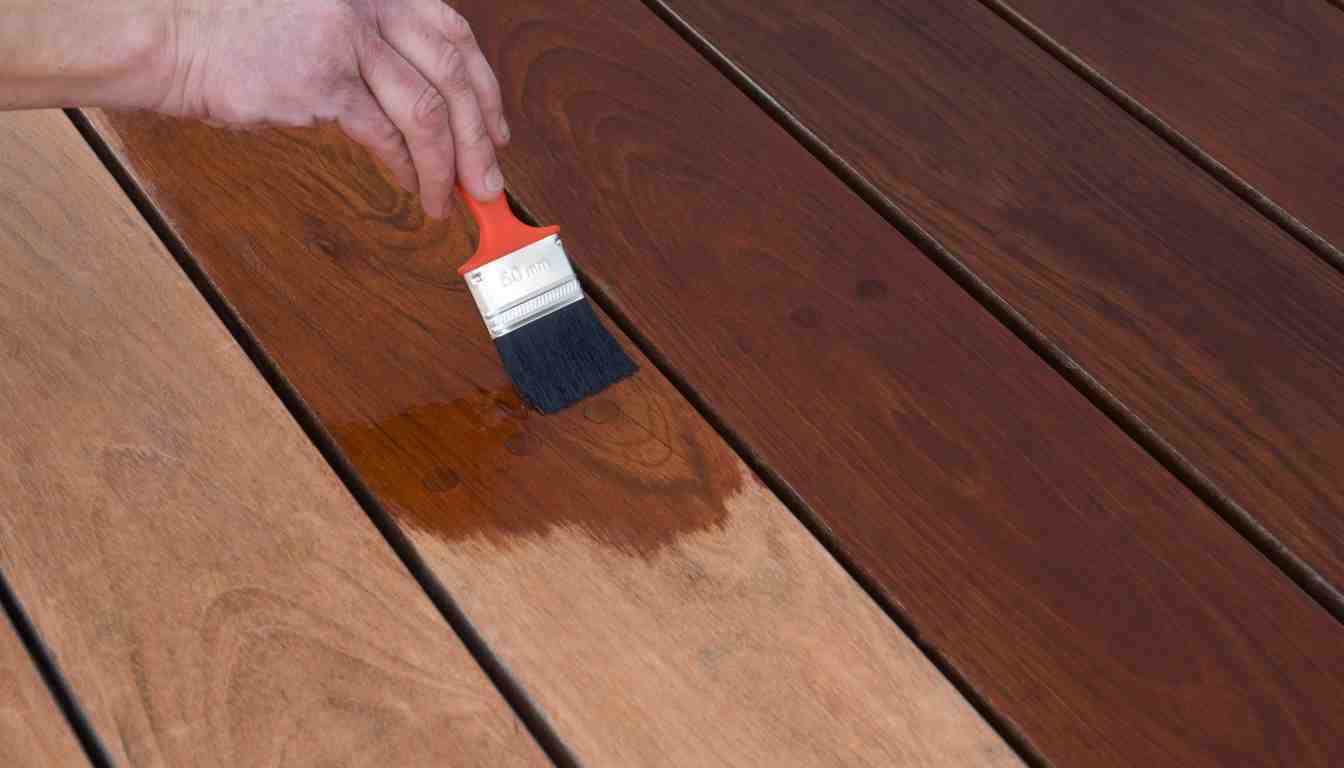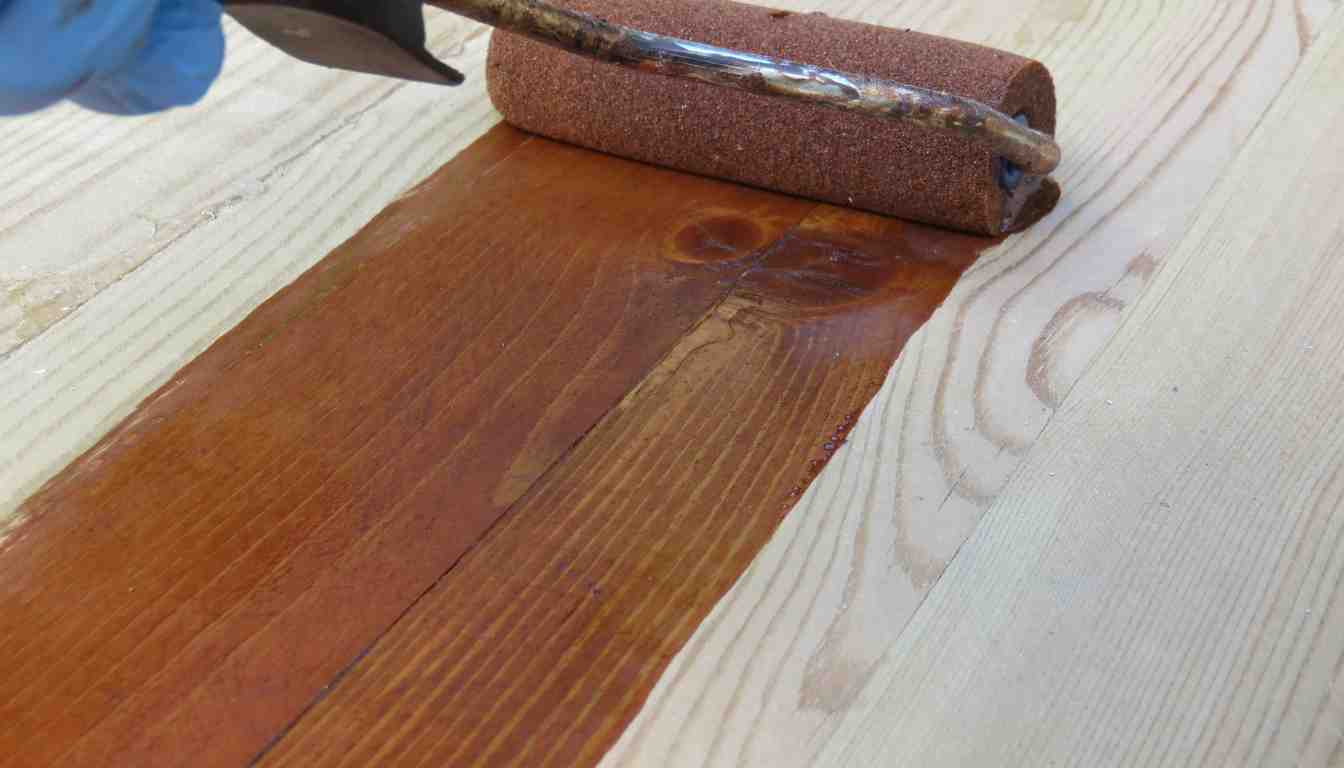Gel stain and regular stain have different consistencies and application methods, with gel stain being thicker and better suited for vertical surfaces, while regular stain is more liquid and suitable for horizontal surfaces. Gel stain is ideal for achieving a more even and controlled color, while regular stain offers a more natural wood grain appearance.
Gel stain and regular stain are two popular options for wood finishing. Although they serve the same purpose, they differ in consistency and application methods. Gel stain is a thicker product, making it easier to use on vertical surfaces and preventing excessive drips.
It allows for a more even and controlled color, making it ideal for achieving a specific shade or glazing effect. On the other hand, regular stain has a more liquid consistency, making it suitable for horizontal surfaces. It seeps into the wood, highlighting its natural grain pattern. Understanding the differences will help you choose the right stain for your project, whether you want a more consistent color or a natural wood look.
Benefits Of Gel Stain
Gel stain offers a range of advantages over regular stain that make it a popular choice among DIY enthusiasts and professional woodworkers alike. Its unique consistency and application method allow for a smoother and more forgiving experience. Let’s delve into the specific benefits of gel stain:
Ease Of Application
Gel stain is incredibly easy to apply, even for beginners. Its thick, gel-like consistency makes it easier to control and prevents it from soaking into the wood as quickly as regular stain. This slower absorption rate allows you to apply the gel stain more evenly and gives you more time to work with the product before it dries.
Versatility
Gel stain is a highly versatile product that can be used on a wide range of surfaces, including wood, metal, fiberglass, and laminate. Unlike regular stain, which is primarily used on wood surfaces, gel stain can adhere to various materials effortlessly. This versatility makes gel stain an excellent choice for projects involving different surfaces or when you want to achieve a consistent look throughout your space.
Minimal Dripping
Gel stain is known for its minimal dripping properties, making it a cleaner and more convenient option compared to regular stain. Due to its thicker consistency, gel stain clings to the surface you’re working on, reducing the chances of messy drips or runs. This not only simplifies the staining process but also eliminates the need for constant cleanup, ensuring a more efficient and enjoyable experience.

Advantages Of Regular Stain
Regular stain, also known as traditional stain, offers a range of advantages that make it a popular choice among woodworkers and DIY enthusiasts. Unlike gel stain, which sits on top of the wood surface, regular stain penetrates the wood fibers, resulting in a deep and long-lasting finish. Let’s explore some of the distinct advantages of regular stain:
Deep Penetration:
Regular stain excels in penetrating the wood, allowing it to seep deep into the fibers and enhance the natural beauty of the wood. Its ability to penetrate provides a more durable and longer-lasting finish compared to gel stain. This deep penetration ensures that regular stain withstands the test of time, protecting the wood from moisture, UV rays, and everyday wear and tear.
Enhanced Grain Definition:
One of the significant advantages of regular stain is its ability to enhance the grain definition of the wood. Regular stain brings out the natural patterns and textures of the wood, highlighting its inherent beauty. As the stain seeps into the wood fibers, it darkens the wood and accentuates the grain, adding depth and character to the final appearance. This enhanced grain definition is often sought after in furniture pieces, flooring, and other wood-based projects.
Regular stain offers a reliable and time-tested approach to achieving a beautiful and durable finish on wood surfaces. Its deep penetration into the wood fibers and ability to enhance grain definition set it apart from gel stain. Whether you are refinishing furniture, installing hardwood floors, or completing any other woodworking project, regular stain provides the advantages of longevity and enhanced aesthetics.
Choosing The Right Stain For Your Project
When it comes to bringing out the natural beauty of wood, staining is an excellent option. But with the wide variety of stains available in the market, choosing the right one for your project can be a daunting task. Understanding the differences between gel stain and regular stain is crucial in making an informed decision. In this article, we will explore the factors that you need to consider when choosing the right stain for your project.
Type Of Wood
The type of wood you are working with plays a crucial role in determining the type of stain you should use. Different wood species have different characteristics, and some may absorb stain differently than others. For example, softwoods like pine and spruce tend to absorb stain more easily, while hardwoods like oak and mahogany may require a bit more effort to achieve the desired finish.
Desired Finish
The desired finish is another important factor to consider when choosing between gel stain and regular stain. Gel stain is known for its ability to deliver a rich, thick coating that sits on top of the wood, providing a more even and consistent finish. Regular stain, on the other hand, penetrates the wood fibers, enhancing the natural grain and texture of the wood. If you are looking for a smoother and more opaque finish, gel stain might be the better choice. If you prefer a more transparent and natural look that allows the wood’s inherent beauty to shine through, then regular stain is the way to go.
Application Method
When it comes to the application method, gel stain and regular stain differ significantly. Gel stain is thicker in consistency and easier to control, making it ideal for vertical surfaces or intricate details where dripping or running is a concern. Regular stain, on the other hand, is thinner and more fluid, making it easier to apply and work into the wood’s surface. If you are working on large, flat surfaces like tabletops or floors, regular stain is generally easier to apply. However, if you are tackling a project with intricate details or vertical surfaces like furniture or cabinets, gel stain might be the more suitable option.
Ultimately, the choice between gel stain and regular stain depends on a variety of factors such as the type of wood, desired finish, and application method. By taking these factors into consideration, you can confidently choose the right stain for your project, ensuring beautiful and long-lasting results.

Conclusion
After comparing gel stain and regular stain, it is evident that both have their unique advantages and considerations. Gel stain provides a more even and consistent color, making it ideal for beginners or those seeking a controlled application. On the other hand, regular stain offers a wider variety of color options and can penetrate deeper into the wood.
Ultimately, the choice between the two depends on your preferences and project requirements. Take into account factors such as application ease, desired finish, and the type of wood being stained.


